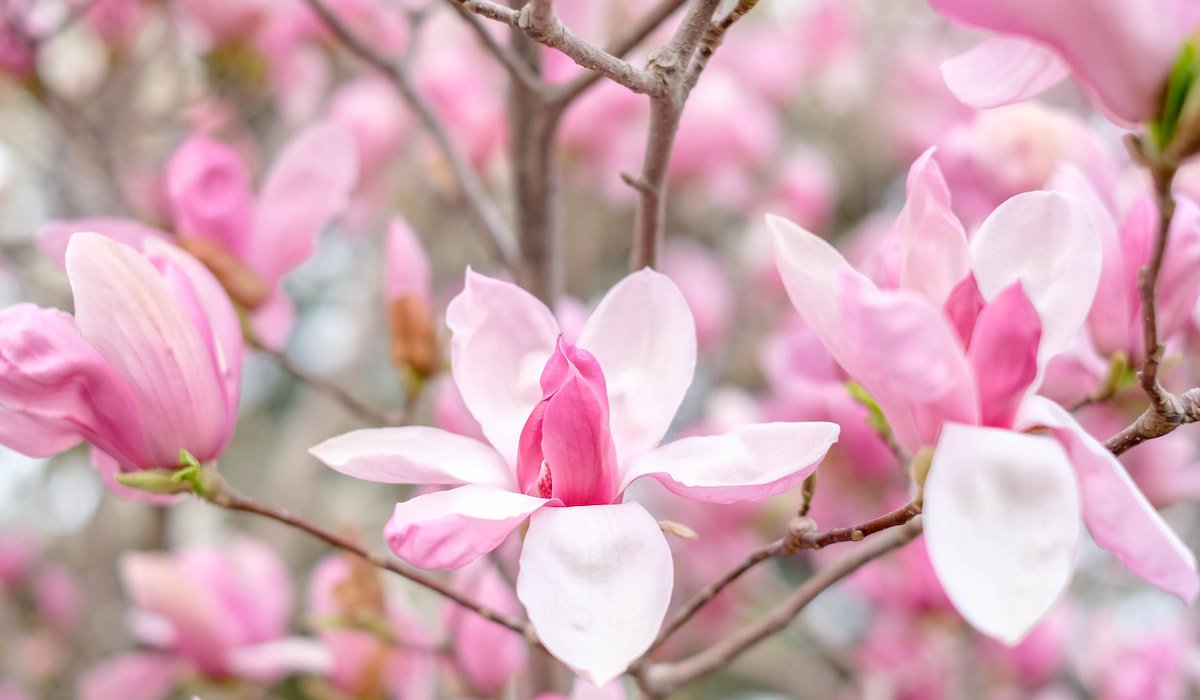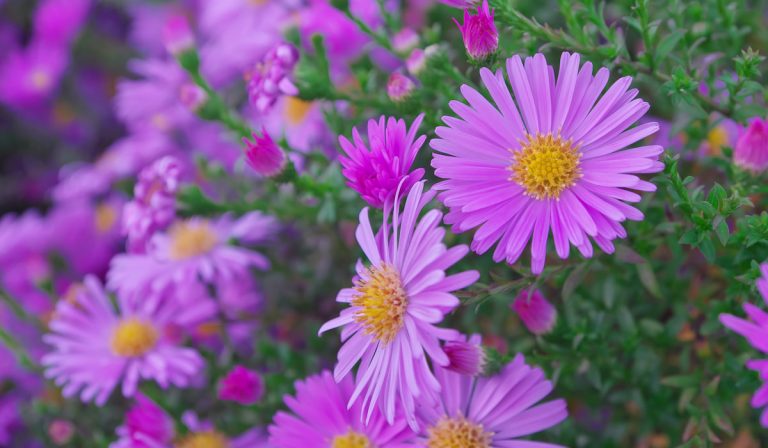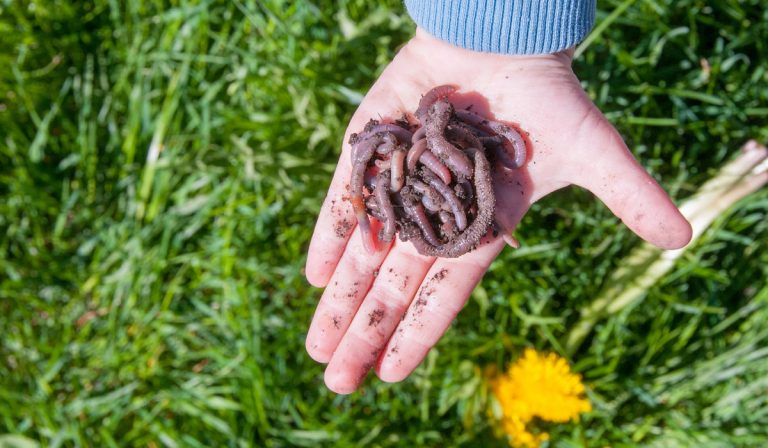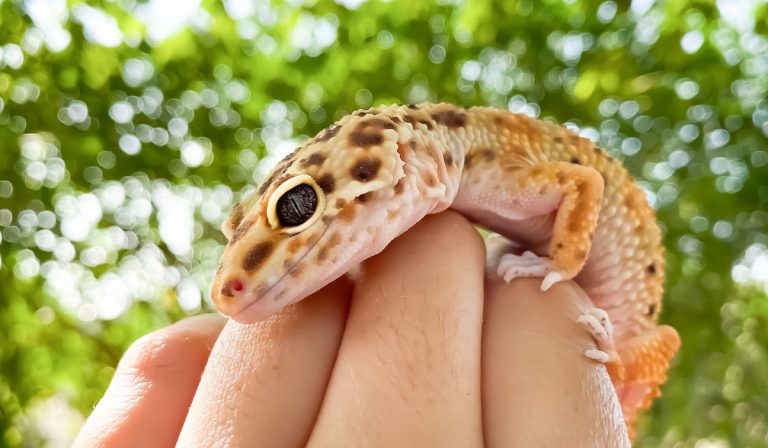7 Beautiful Trees With White and Pink Flowers
From giving your yard a bold look to uplifting the scenery, flowering trees grow into magic. They add color and fragrance to landscapes, and they also provide some privacy outdoors.
Flowering trees potentially bring a lot of enhancement to your landscape. But before you go ahead and choose one for your landscaping project, there are certain things you need to know.
Beforehand, you must be aware of details like growing zones of the tree, height at maturity, and sun exposure.
In this article, we review 7 beautiful trees with white and pink flowers. We talk about the gardening zone compatibility, blossoming period, and much more.
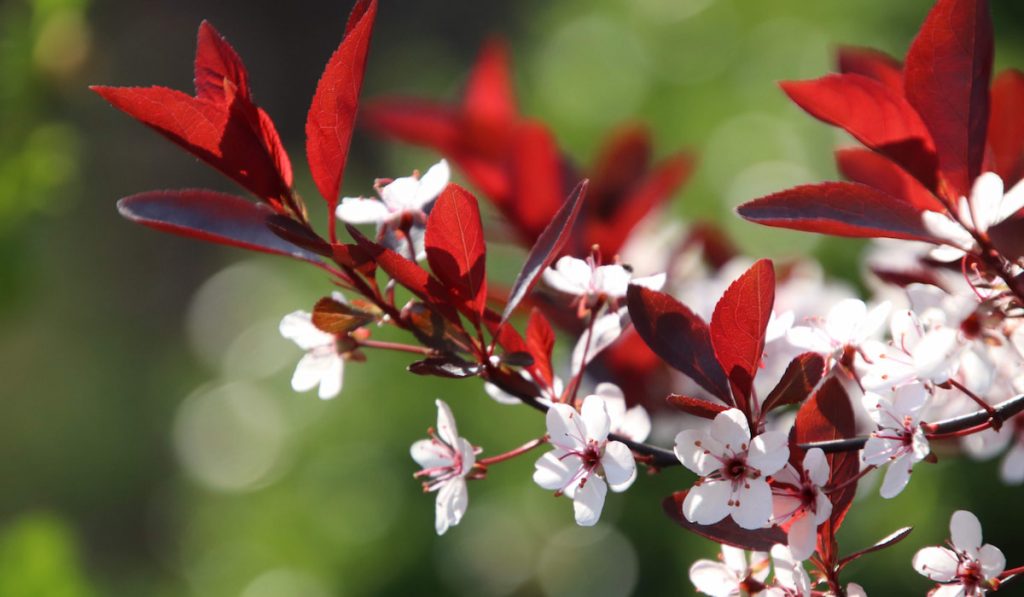
Table of Contents
Purple-Leaf Sand Cherry
The Purple-Leaf Sand Cherry is a beautiful flowering tree indigenous to North America. It is ideal for any landscaping project and can be grown as a small tree or a medium-sized shrub.
Purple-Leaf Sand Cherries begin blooming in spring, and they produce white or pink flowers. By the middle of summer, the white and pink flowers are replaced with purple to black fruits.
Besides the flower, this tree is also known for its attractive purple foliage, which leafs out as a bright reddish-purple in spring.
Purple-Leaf Sand Cherry is a fast-growing plant, and at maturity, it can be 6-10 ft. tall and 5-8 ft. wide.
Purple-Leaf Sand Cherry thrives in moist, well-drained soil and prefers full sunlight exposure. They are frost tolerant but highly susceptible to diseases and pests.
Purple-Leaf Sand Cherry is found in USDA growing zones 2-8.
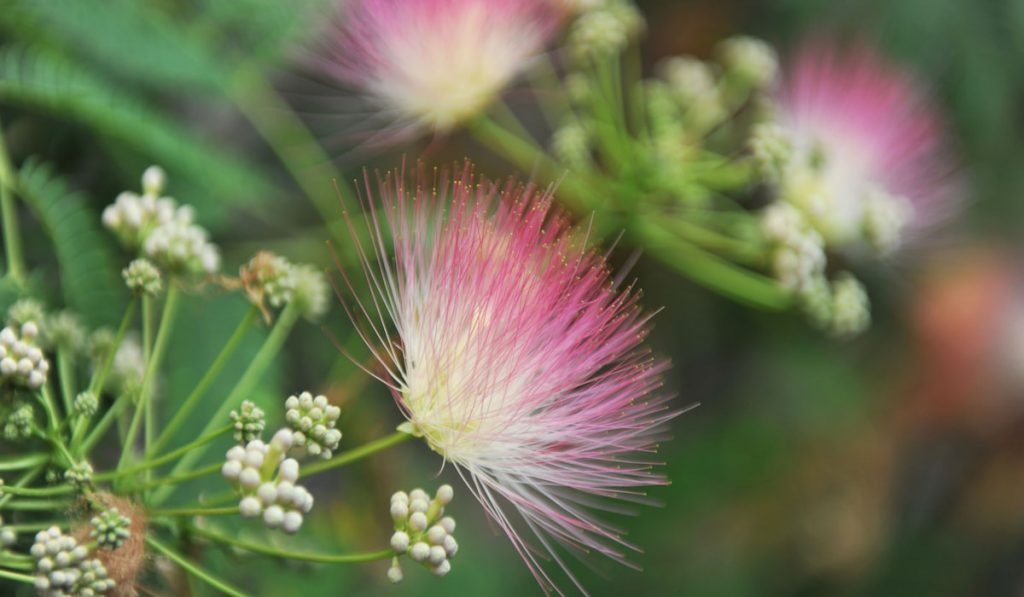
Persian Silk Tree
The Persian Silk tree, also known as Mimosa, is an attractive tree with exotic, puffy white and pink flowers and fern-like leaves. It is indigenous to several regions, including Iran and Japan. The leaves of the Persian Silk tree have tiny leaflets that close when you touch it or when the sun sets.
The white and pink flowers of the Persian Silk Tree begin blooming from early to mid-summer. They have a white base that becomes pink at the tip, and when exposed to sunlight, they radiate a mild fragrance.
The Persian Silk Tree is highly adaptable. It can grow in areas like open fields and roadsides, but this can also make it difficult to control. Unsurprisingly, in some states, this tree is currently considered invasive.
At maturity, Persian Silk Trees are 20-40 feet tall and 20-50 feet wide.
Persian Silk Trees are frost tolerant. They thrive in moist, well-drained soil with full or partial sunlight exposure. Persian Silk Trees are found growing in USDA zones 6-9.
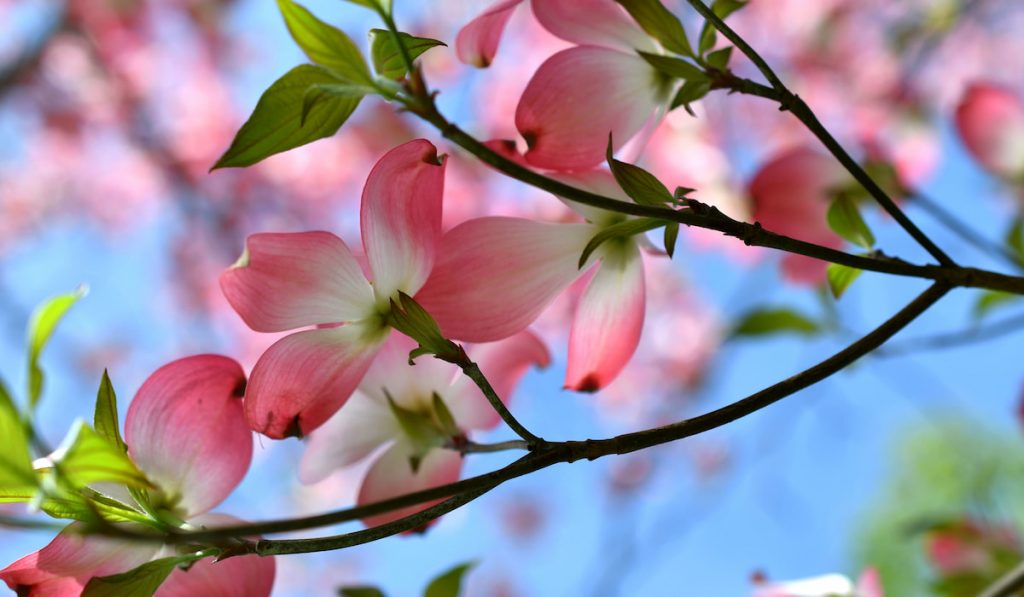
Flowering Dogwood Trees
Flowering Dogwoods are small deciduous trees indigenous to Eastern North America. They produce white, pink, and red flowers that blossom in early spring.
But besides the colorfulness of their flowers, the dark green leaves of Flowering Dogwood trees transform into an attractive red in the fall.
The petals of the Flowering Dogwood have an obovate shape, and the tree itself has a low branching habit.
At maturity, Flowering Dogwood Trees can grow around 15-20 feet tall. Plus, they produce mildly toxic fruits, which you should not eat.
Flowering Dogwood trees do well in moist, well-drained soil and are ideal for areas with afternoon shade. They are found growing in USDA zones 5-8.
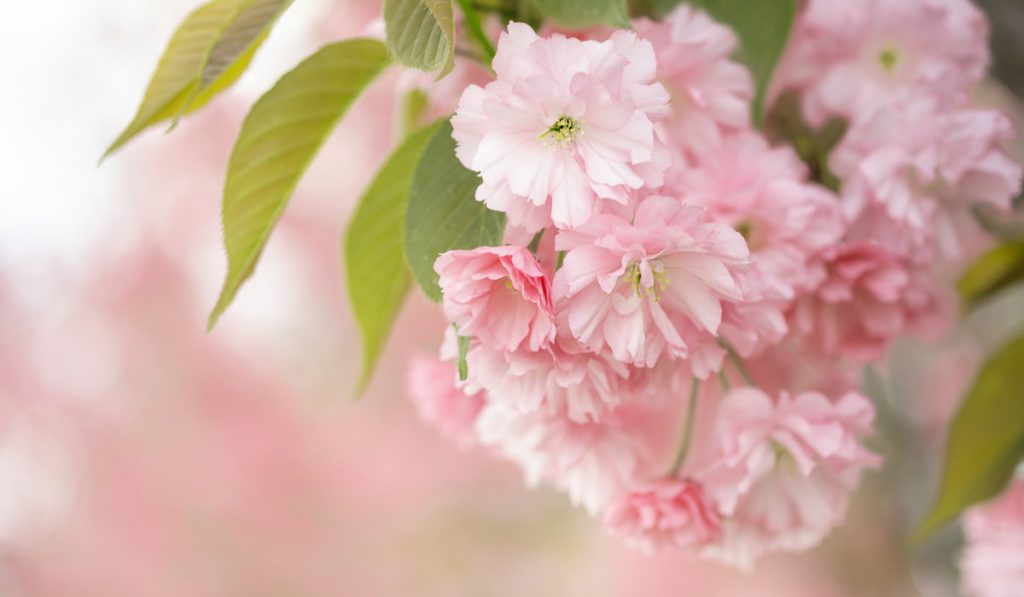
Weeping Cherry
The Weeping Cherry is a deciduous plant prized for its flowers in the spring. It produces white and pink blossoms, and some of its varieties include ‘Snow Fountain’ and ‘Weeping Higan’.
The white and pink blossoms of the Weeping Cherry tree appear in the spring and can become a focal point for any garden. You can plant Weeping Cherry as a specimen tree or in groups.
At maturity, Weeping Cherry Trees are 20-30 ft. tall and 15-25 ft. wide. They thrive in moist, well-drained soil and prefer full sunlight exposure.
Weeping Cherries are short-lived trees and are also susceptible to pests and diseases. They are typically found growing in USDA zones 4-8, depending on the species.
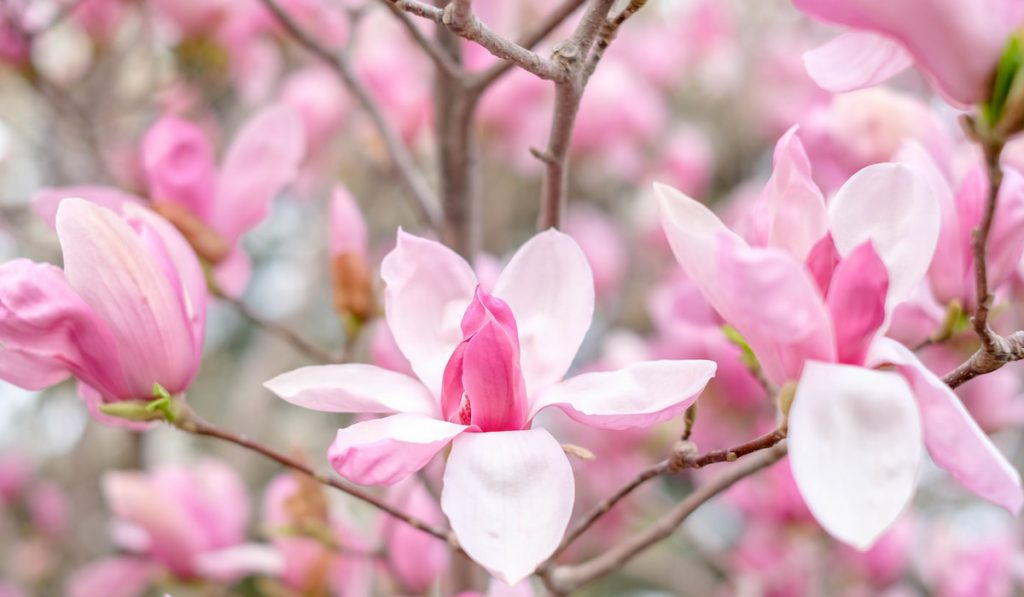
Saucer Magnolias
Saucer Magnolias are well-known flowering trees developed by crossing Lilytree and the shrub form of the Lily Magnolia. Although Saucer Magnolias grow as multi-stemmed shrubs, you can train them into small trees.
The rounded crown of the Saucer Magnolia makes it ideal for landscaping.
Saucer Magnolias produce pinkish-white flowers that bloom in the spring. A large number of blooms usually appear before the leaves emerge. But a small number of flowers still bloom even after the leaves have emerged.
At maturity, Saucer Magnolias can grow around 20-25 feet tall and wide, making them perfect for large-sized properties.
Saucer Magnolias thrive in moist, well-drained soil with full sunlight exposure to partial shade. You can find them in USDA growing zones 4-9.
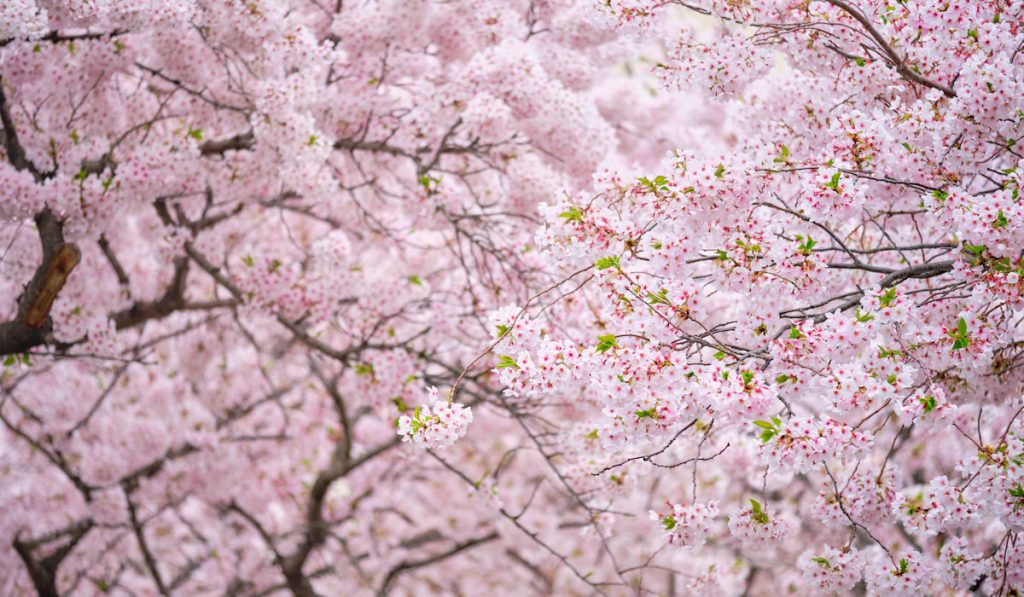
The Cherry Blossom Tree
The Cherry Blossom tree, also called Sakura, is well known for its enticing blooms. They are mainly grown for their attractive and profuse springtime blossoms.
The Cherry Blossom Tree produces light pink to white flowers that can transform the atmosphere of your garden. Although they are indigenous to eastern Asia, several countries currently have festivals celebrating the annual blooms of this tree.
There are several varieties of the Cherry Blossom Tree. Some of the common ones include ‘Yoshino’, ‘Ichiyo’, and Weeping Cherry.
Flowering cherry trees do not produce fruit, so you do not need to worry about cleaning up overripe cherries.
A popular choice among homeowners and landscapers, Cherry Blossom trees can reach around 40-50 feet when they mature. The tree has a moderate growth rate and requires minimal pruning.
Cherry Blossom trees can tolerate different soil conditions. But they thrive in moist, well-drained soils, with full sunlight exposure or partial shade.
The Cherry Blossom tree is found in USDA growing zones 5-8.
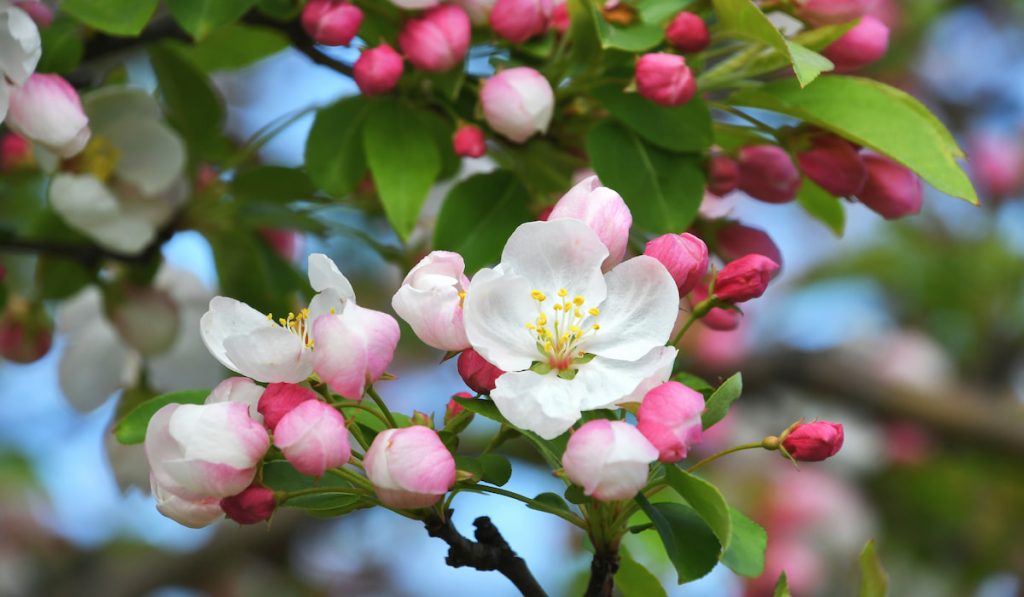
Flowering Crabapples
Flowering Crabapples are small to medium-sized trees indigenous to Asia, North America, and Europe. They bloom in late spring, and when they do, they produce delicate, fragrant white or pink flowers.
With over 30 varieties available, Flowering Crabapples are ideal for those looking to attract pollinators and wildlife to their garden.
In the fall, Flowering Crabapple trees produce fruits that appear in a wide range of colors.
At maturity, Flowering Crabapples can grow around 10-40 ft. tall. They thrive in rich, moist, well-drained soil with full sunlight exposure.
Flowering Crabapples are found growing in USDA zones 4-8.
Resources
- https://www.thespruce.com/kwanzan-cherry-trees-2132134
- https://www.thetreecenter.com/all-about-cherry-blossom-tree/
- https://www.thespruce.com/purple-leaf-sand-cherry-growing-profile-3269234
- https://www.thespruce.com/growing-persian-silk-trees-albizia-julibrissin-5094178
- https://www.thespruce.com/twelve-species-dogwood-trees-shrubs-subshrubs-3269662
- https://www.thespruce.com/weeping-cherry-trees-the-best-cascading-faves-4767407
- https://www.thespruce.com/magnolia-trees-saucer-magnolias-2132135
- https://www.thespruce.com/crabapple-tree-plant-profile-4801469
- https://crateandbasket.com/types-of-trees-with-pink-flowers/
- https://www.thespruce.com/types-of-flowering-trees-4069714
- https://www.gardenia.net/plant-variety/prunus-serrulata-japanese-flowering-cherry

